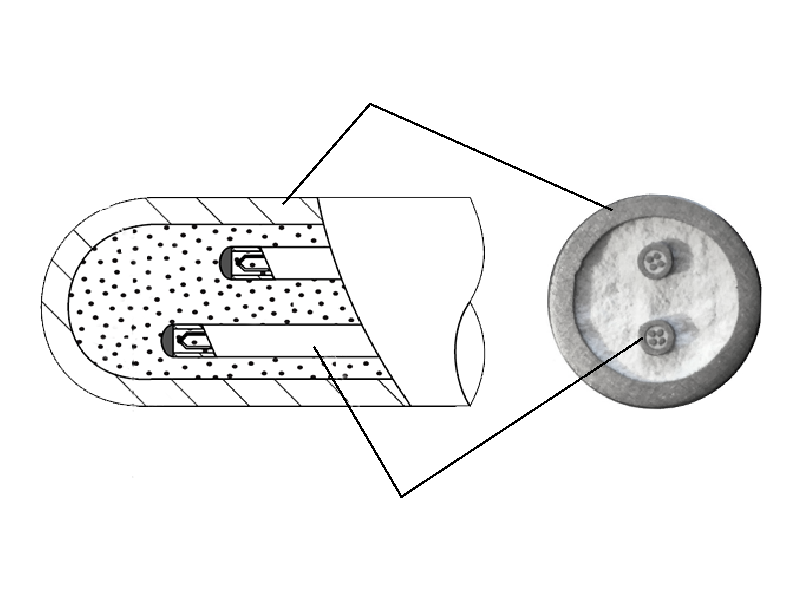Understanding interface level measurement in the Oil & Gas industry
Interface level measurement plays a critical role in many process industries, particularly oil and gas. Safety and profitability hinges on […]
In the refining industry, catalytic hydro-processing elements—such as hydrotreater, hydrodesulfurization, and hydrocracker units—rely on high-performance catalyst technologies to maximize product conversion. To maintain stable and profitable unit operations, temperature mapping of these densely packed reactor catalyst beds must be precise and reliable.
Thermocouple temperature instruments are widely used in the industry, but harsh operating conditions can cause issues such as sensor drift, degrading control of these processes over time.
While all thermocouple outputs are known to drift—often due to probe issues—designers do not always factor in the mechanical stress, abrasion, and H2S contamination present in downstream operations when specifying instrumentation and accessories. These issues can lead to a total loss of data—threatening process safety, reaction control, and efficiency.
Defective thermocouple probes have been found in a significant number of applications throughout the industry and are systematically affecting all instrument manufacturers. This occurrence has been examined scientifically, resulting in the discovery of two phenomena that degrade thermocouple measurement performance, with each occurring separately or in combination: thermocouple drift and hot junction migration.
Thermocouple drift is caused by the chemical contamination of MgO powder-induced changes in the composition of the two dissimilar metals that make up the thermocouple conductor wires, leading to a shift in potential difference due to the Seebeck, or thermoelectric, effect. While the local hot junction of the probe remains intact, a change in conductivity of one or both metals alters the measured voltage, negatively impacting measurement accuracy.
Hot junction migration is caused by the permeation of H2S in the MgO powder, creating new conductive bonds—electrical short circuits—between the thermocouple wires at undesired locations away from the hot junction. When this occurs, the thermocouple continues to function, but it produces inaccurate values that seem true.
To address these and other issues, the minimally invasive Endress+Hauser iTHERM ProfileSens TS901 multipoint cable probe combines thermowell and thermocouple sensors in a single space-saving sensor, addressing failure vulnerabilities and providing the measurements needed for improved control of catalytic reactions and multipoint temperature profiling.
The sensors are embedded in a common outer metallic sheath, acting as an integrated thermowell, while the space between the sensors is filled with highly compacted insulating MgO mineral powder to minimize contamination by the process media.
Since the two sensors are completely independent from each other, contamination of the outer MgO powder does not affect the inner sensors’ electrical circuits and their operation. New, patented technology introduces a second layer of protection. An additional metal barrier isolates each measuring circuit within its own MgO bed, providing full sensor independence. This double protection layer results in extremely high sensor reliability, similar to a separate thermowell, while maintaining the flexibility characteristics of bendable cable probes.

Multiple thermocouple sensors can be grouped within a single probe, each providing the required measurement performance, and probe layout and routing, length, and the number of sensors can be individually adapted to meet process specifications. This type of design is proven in use to significantly lower the risk of premature sensor drift, corrosion, and short circuits.
In addition to improved process safety, control, and reliability, this new technology unlocks profitability potential by:
The newer design increases the usable catalyst bed volume by 50 percent and cuts installation time by 7%. The increased volume can be used to boost the catalyst load, and the saved installation time directly translates into quicker turnarounds and lower cost.
Measured against an average daily unit profitability and a continuous operation of 36-48 months, the resulting extra revenue generated fully offsets the CAPEX.


As the number of measurement points increase, the savings effect grows to the point where the initial investment of multipoint temperature profiling becomes negligible when compared to the increased returns.
Extensive tests and scientific studies have shown that mechanical stress, abrasion, corrosion, hydrogen stress-induced cracking, and subsequent H2S contamination is a leading cause for total loss of data—reducing process efficiency, while posing risks to safety and reaction control.
The iTHERM ProfileSens addresses these issues, providing improved process safety, control, and reliability. Additionally, it increases profitability, helping refiners get the most out of new and existing units.
Interface level measurement plays a critical role in many process industries, particularly oil and gas. Safety and profitability hinges on […]
Instruments are vital in process environments because their measurements directly impact product quality and operational safety. However, even the most […]
Greg Pryor is the Temperature Product Marketing Manager at Endress+Hauser USA. To help answer some questions surrounding temperature transmitters, we […]